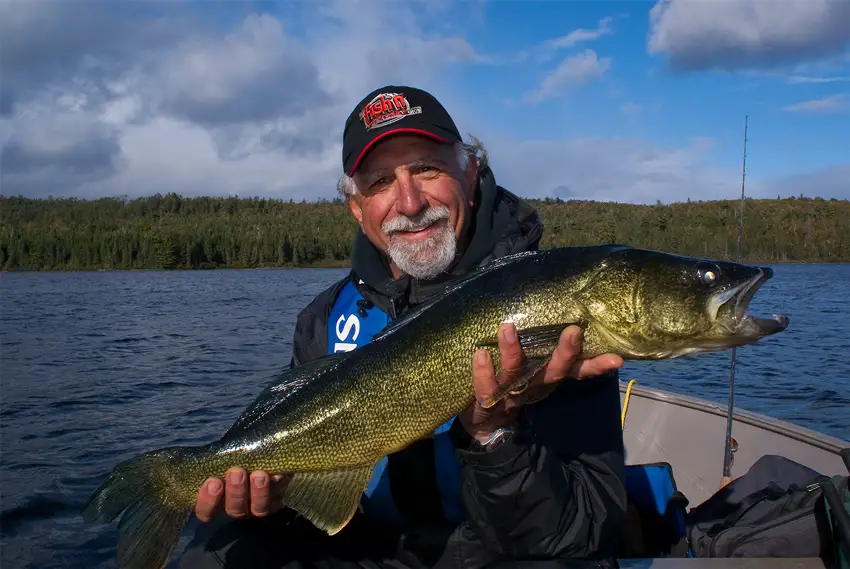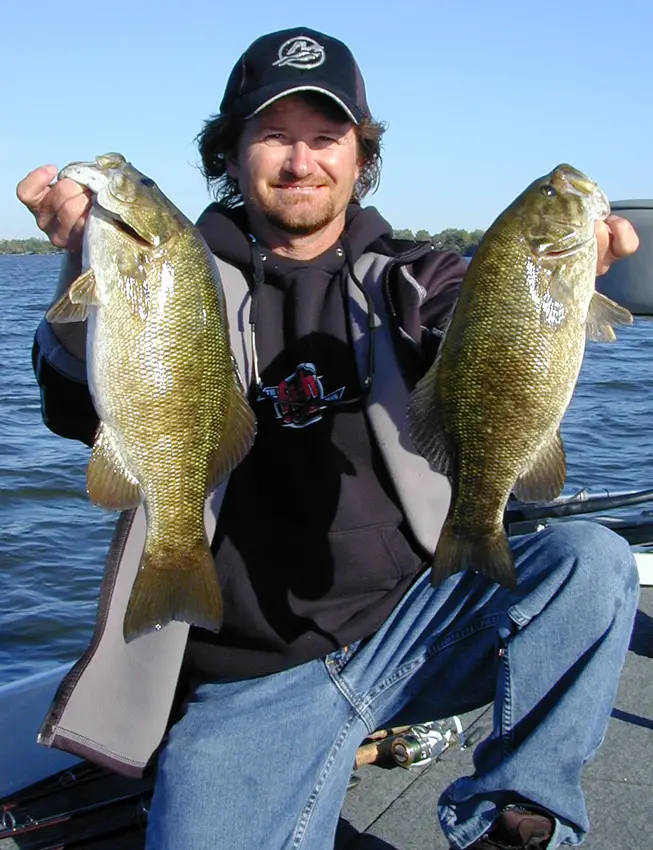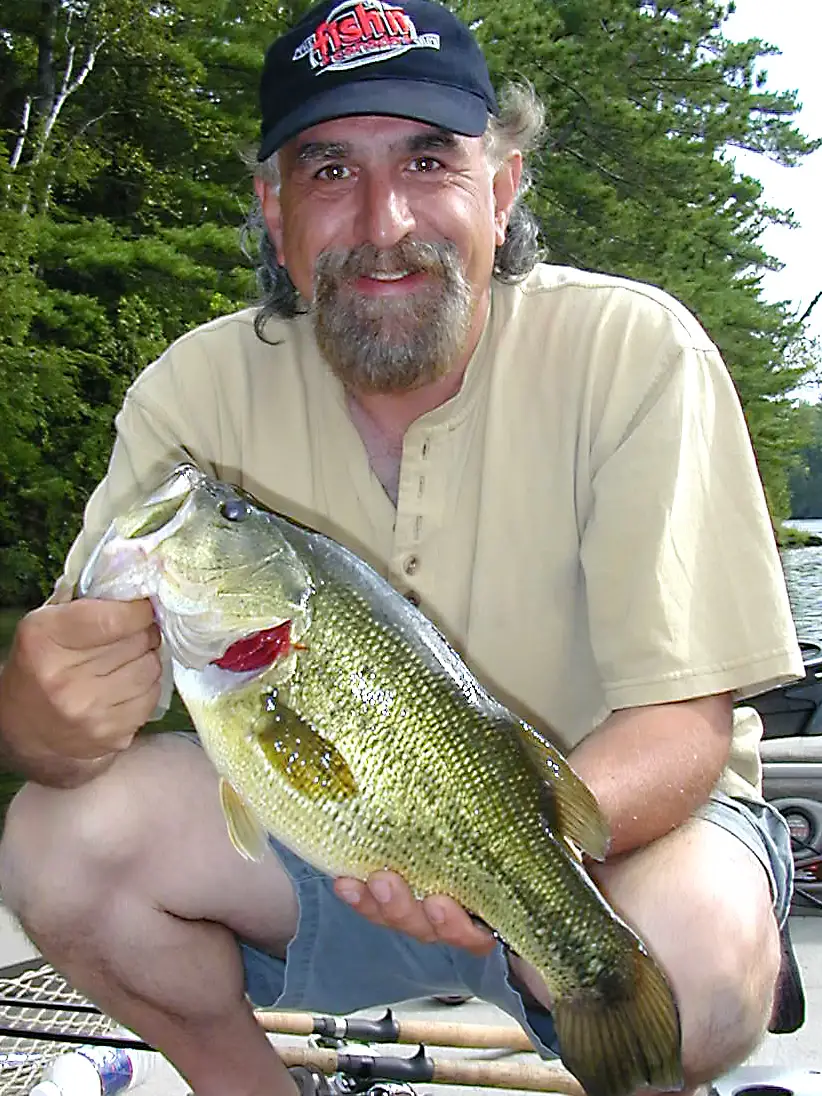Being based out of Southern Ontario, one of the most common questions the Fish’n Canada hosts are asked is, “What kind of fish are in Rice Lake?” With the considerable amount of experience the boys have had on this exceptional body of water, they’ve decided to offer their two cents in a definitive guide to fish species on Rice Lake.
Rice Lake
This mega-popular fishing destination is in the Northumberland and Peterborough counties in Southeastern Ontario. It is only a short drive from the province’s main paved corridor, Highway 401, which runs along the Lake Ontario north shore. Towing a fishing rig to get there is a piece of cake.
Rice Lake is often referred to as one of the “Kawartha Lakes.”
Serpent Mounds Provincial Park, a National Historic Site of Canada, sits on the north shore of Rice Lake.
The closest towns are Bewdley, Otonabee–South Monaghan, Hastings, Alnwick/Haldimand, Cavan-Monaghan.
Rice Lake is 32 kilometres long, has a maximum depth of 27 feet (8.2 metres) and covers an area of 100.2 square kilometres.
Rice Lake is an incredibly fertile lake, often matting up with acres upon acres of surface weeds. This massive weed growth often deters anglers from fishing here. This is a big mistake. Because of the lush and expansive weed growth in Rice Lake, the fish populations are nothing short of spectacular.
Starting at the top of the food chain, here is our species list:
Rice Lake | 1. Musky (aka Muskie)
The Muskellunge is quite the unique fish. After all, it has the stigma of being the fish of 10,000 casts. Tough to learn about and often tough to catch. The musky population in Rice Lake is quite amazing, making the odds of success that much better. From end to end (Bewdley to Hastings), Rice’s musky numbers are astounding. Along with the main lake, they are caught annually in the incoming rivers (Otonabee, Ouse, Indian) and the outflowing Trent River at the lake’s east end.
“My first-ever musky came while I was Rice Lake fishing near Bewdley,” recalls Pete. “It was in the early eighties. I was fishing for Smallmouth Bass one evening after work and doing quite well. Then everything shut down. I found that odd since the smallies were on the bite. Then suddenly, my little crankbait got stopped. I thought for sure I snagged into a Carp until it jumped. Then I knew it was a musky.”
That first musky for Pete weighed in at 27.77 pounds and was 48 inches long. Back in those days, catch and release fishing was just beginning to catch on. And although Pete did release his bass for that day, he kept the musky, entered it into the Molson Big Fish Contest and got the fish mounted. When Pete stopped by to show his parents the fish, his mom freaked out!

Rice Lake has lots of muskies in it!
Rice Lake | 2. Walleye
Rice Lake is one of the best Walleye fisheries in all Southern Ontario. That lush weed growth we were talking about at the top of this piece is a significant factor when it comes to Walleye. As with a lot of warm-water fish species, Walleye love weeds. They swim among them, they rest in them and—most importantly—they feed in them.

By either trolling the weed edges or fishing directly in the weeds, Walleye are caught by the thousands annually on Rice Lake.
“I remember way back when I first discovered rip jigging,” says Angelo. “This was absolutely the most bizarre Walleye technique I had ever attempted.”
Rip jigging consists of taking a bucktail jig (around 3/8 oz) and firing it directly into the weeds. Once it hits bottom, the angler rips or pops it in a sharp upward motion, mimicking a struggling baitfish.
“When I felt my first Walleye while ripping, I thought the rod was going to be wrenched right out of my hand,” continues Angelo, “The strike was that violent. So was the fight of the Walleye that engulfed my bucktail. Since that outing, rip jigging has been a main ingredient in my Walleye fishing arsenal.”
Of course, trolling, live bait fishing, and drifting all work while Rice Lake Walleye fishing.
Rice Lake | 3. Smallmouth Bass
Of the two bass species on Rice Lake, the Smallmouth Bass is king.
Yes, there are a lot of Largemouth Bass on Rice, but if you attend the weigh-in of a typical bass tournament on the lake, Smallmouth pretty much always prevail.
Tube jigs still produce many big Smallmouth on Rice Lake. Dragging or even dead sticking a tube in the open water near the islands is a great way to catch a gigantic smallie.

Pretty much any other popular Smallmouth Bass fishing technique will also work on Rice Lake. Topwater poppers and walkers can be outstanding, spinnerbaits on flats, crankbaits and rattle baits near the weeds and, of course, dropshotting will all work.
Look for hard bottom near the weeds, and you will eventually find Rice Lake Smallmouth Bass.
Rice Lake | 4. Largemouth Bass
As stated above, the Largemouth Bass population on Rice Lake is nothing but astounding. If one were to compile a list of all Southern Ontario lakes that would be considered excellent Largemouth Bass waters, Rice would be high on that list.
Angelo and Pete have done extremely well dunking weed beds with flipping jigs, plastic worms and creature baits (some of the best bass lures for dunking) tied on Texas Rig. By drifting with the wind, they methodically drop their presentations into the holes in the weeds, hoping for that solid feel upon lifting their rod tips. But not all weed beds are equal.
Thick matted up dead weeds are also a sure-fire spot for Rice Lake Largemouth Bass. A heavy, pegged tungsten weight with some sort of weedless-rigged plastic is killer in the mats.
Shallow weed flats with open holes are a great place to drop a soft stick worm—Texposed, wacky or Neko-rigged.
The islands throughout the lake provide excellent structure and cover for Largemouth Bass. With their rocky and tree-studded shores, the Rice Lake islands produce great Largemouth annually.

Do you want to try deep weedline fishing? Then Rice is the place to be. Pete and Angelo have caught loads upon loads of weedline Largemouth Bass on Rice Lake.
Rice Lake and Largemouth Bass go hand-in-hand!
Continue to Page 2 for more fish species on Rice Lake.

LOOKS LIKE A GREAT PLACE TO FISH